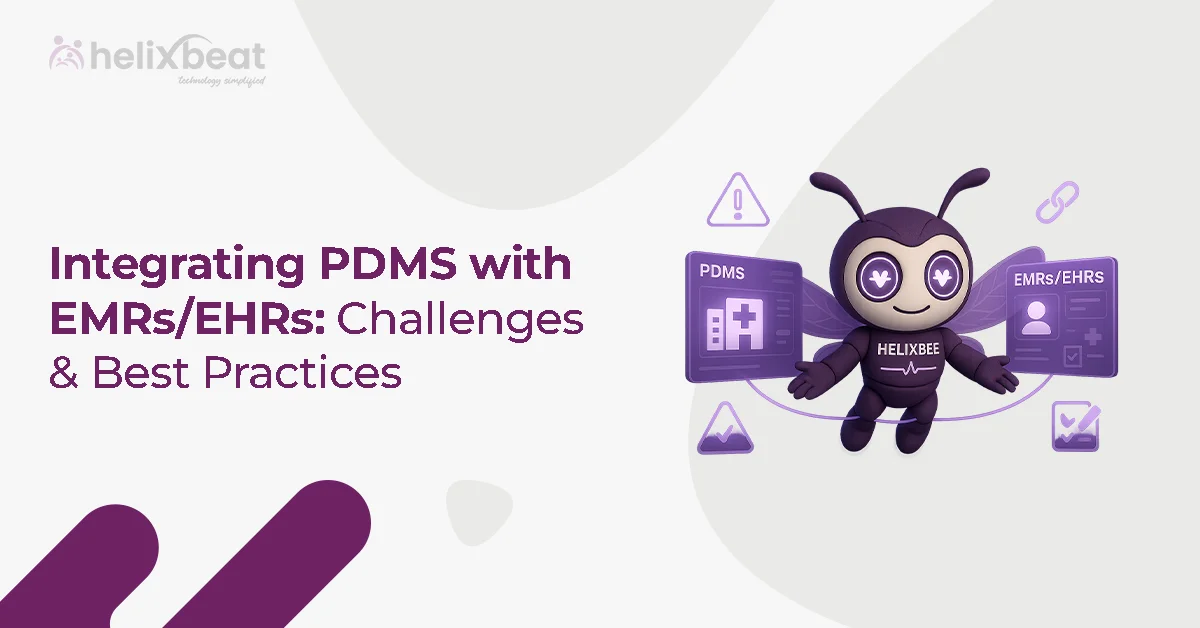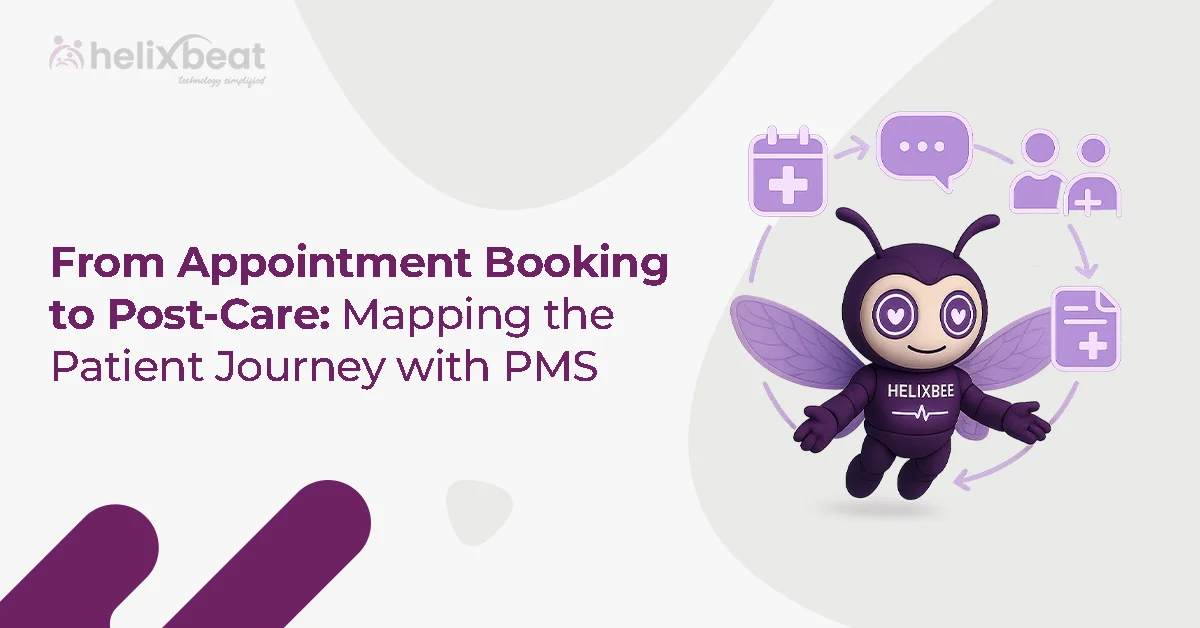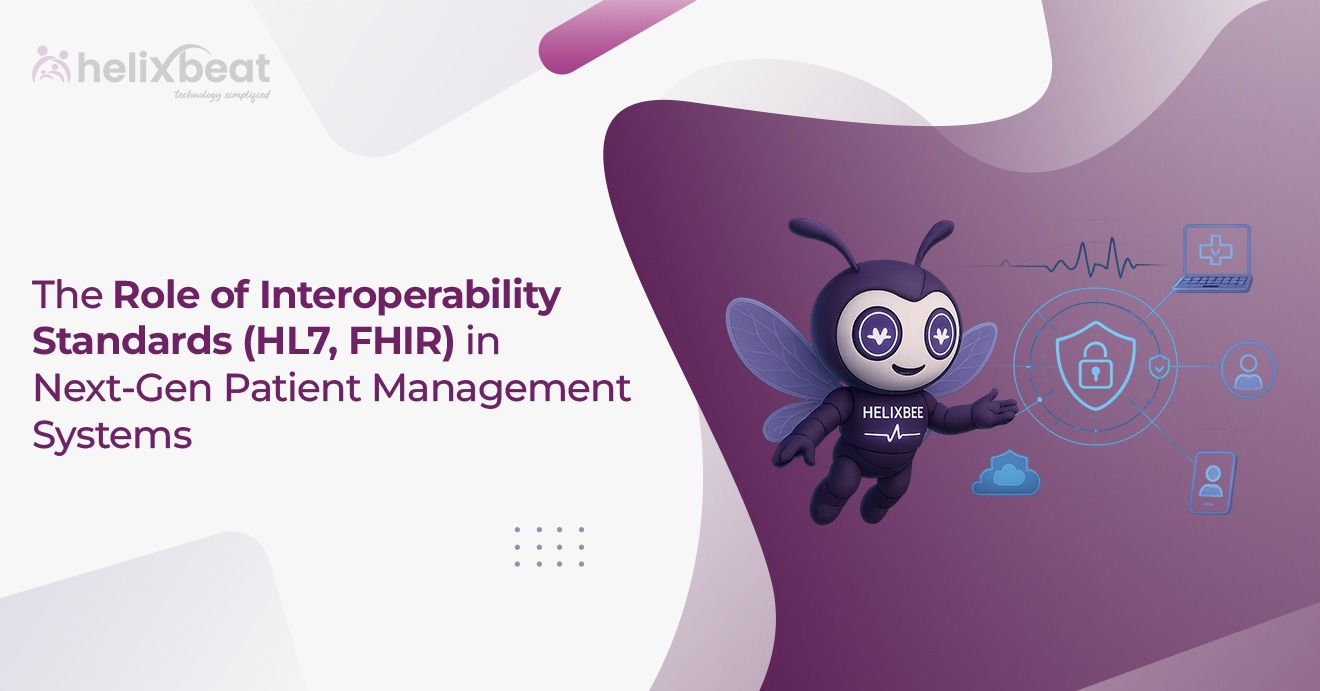Table of Contents
Introduction
Picture this: A man falls off a ladder while fixing a lightbulb and breaks several bones in his leg. An ambulance rushes him to the emergency room. Doctors perform a series of tests, including X-rays and an MRI, to assess his injuries. He receives pain medication, a cast for three months, and later, six weeks of physical therapy to regain mobility.
In mere hours, this man accrues significant out-of-pocket medical expenses. Like many Americans, he has limited savings and has already maxed out much of his credit access. Now, he faces the daunting task of managing these unexpected costs in a situation that is already physically and emotionally overwhelming.
Even for insured individuals, the rising costs of healthcare can be staggering. In 2015, the average individual out-of-pocket healthcare expense was $2,383. Yet nearly 70% of Americans had less than $1,000 in savings to cover such emergencies. Patients often resort to credit cards or loans, further compounding their financial stress.
These financial pressures are making patients hesitant to seek even routine care, creating a vicious cycle of neglect and worsening health. Healthcare providers, therefore, face a growing responsibility to offer patient-friendly payment solutions that ease these burdens. Doing so not only supports the patient’s well-being but also strengthens trust and ensures financial sustainability for the organization.
In this blog, we’ll explore why patient-friendly payment options matter and how they impact both patients and healthcare providers.
Why Flexible Payment Methods Needed
When it comes to healthcare, trust is everything. Patients entrust their health—and often their lives—to medical professionals. However, the financial stress associated with medical expenses can erode that trust. Offering flexible payment methods can mitigate this strain, creating a more positive and transparent experience for patients.
1. Simplifying Financial Decisions
Patients overwhelmed by the complexities of insurance policies and billing systems often feel powerless. Flexible payment methods, such as installment plans or upfront cost estimates, empower patients to make informed financial decisions without sacrificing essential care.
For instance, breaking a large medical bill into manageable monthly payments can reduce the mental and financial stress patients face. Knowing they have the option to pay gradually builds confidence in the healthcare provider’s commitment to their well-being.
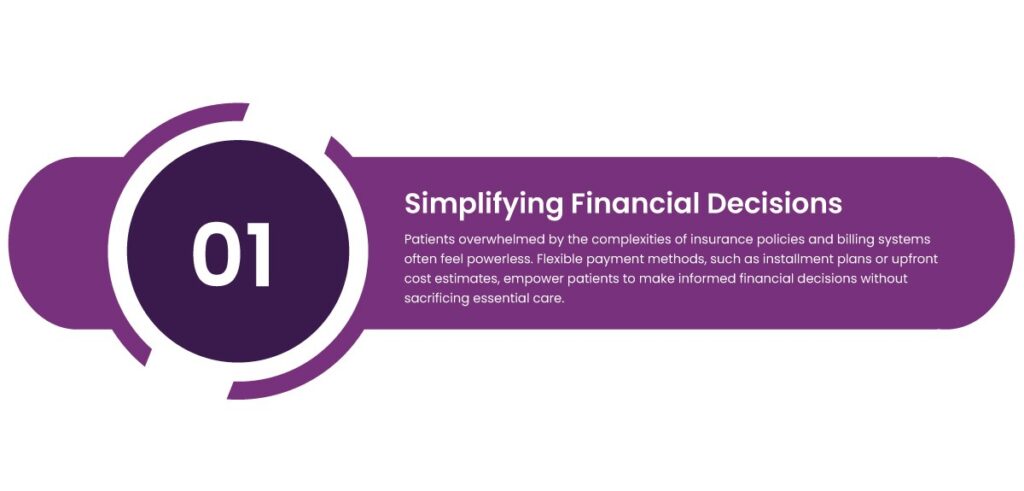
2. Enhancing Patient Satisfaction
Patients remember how they are treated, not just medically but financially. A compassionate approach to billing—such as offering zero-interest payment plans or flexible due dates—significantly improves patient satisfaction.
Research shows that patients who feel respected and supported during billing processes are more likely to recommend the provider to others. This leads to higher patient retention and a positive reputation for the organization.
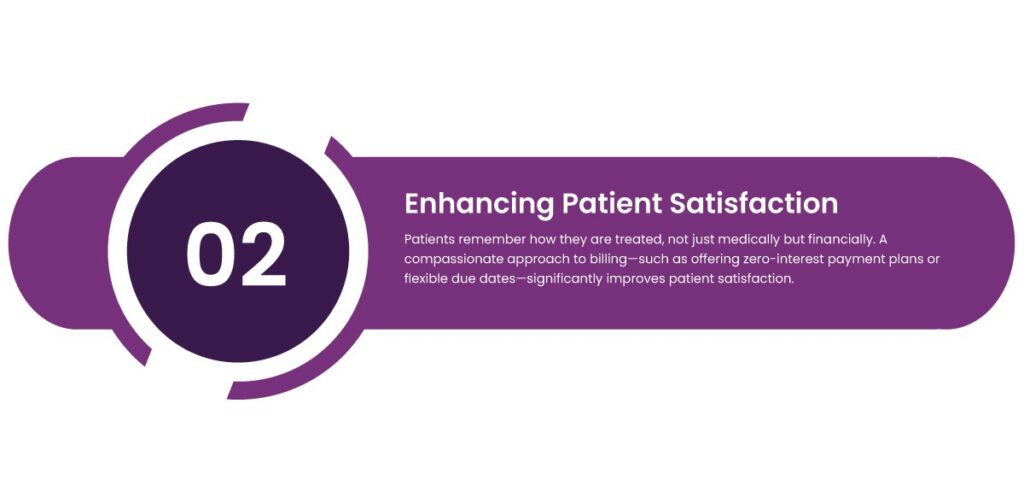
3. Encouraging Preventive Care
Patients burdened by financial stress often delay or skip routine check-ups, vaccinations, or early diagnostic tests. Flexible payment methods eliminate cost as a barrier, encouraging patients to seek preventive care before minor issues become major health crises.
By proactively addressing financial concerns, healthcare providers can play a vital role in improving community health outcomes.
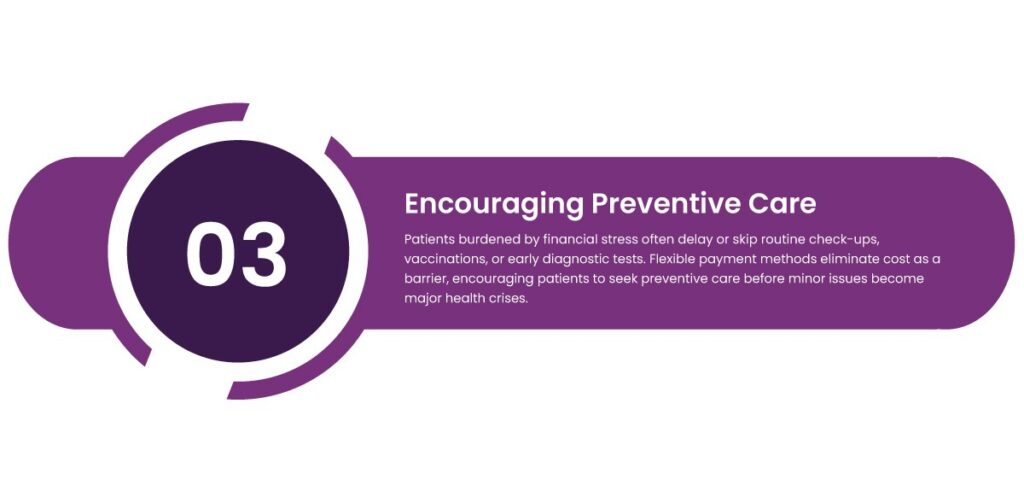
4. Reducing Financial Anxiety
For many patients, medical expenses are a source of immense stress, particularly when faced with large or unexpected bills. Flexible payment options—such as extended payment terms or income-based repayment plans—can alleviate this anxiety.
When patients feel supported during vulnerable times, they are more likely to trust the healthcare provider and focus on recovery instead of worrying about costs.
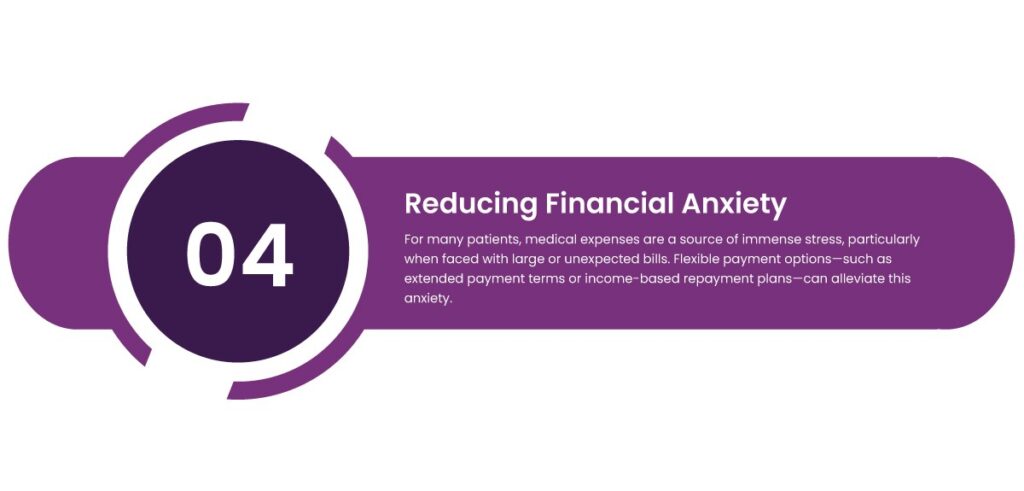
5. Aligning Payments with Patients’ Financial Circumstances
Not all patients have the same financial capacity, and one-size-fits-all payment systems can alienate those in financial distress. By tailoring payment plans to match individual circumstances—such as income levels or existing debt—providers demonstrate empathy and a willingness to accommodate patients’ needs.
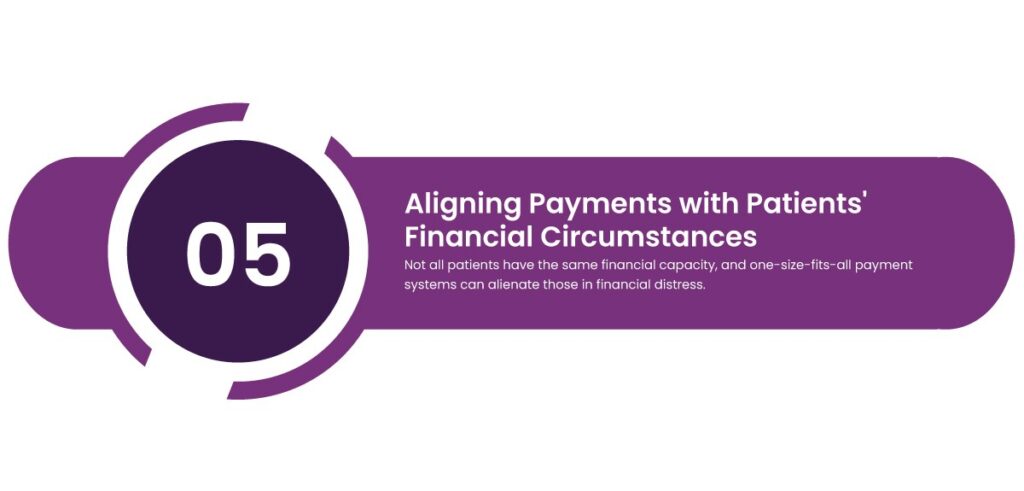
6. Increasing Accessibility to Healthcare Services
When payment options are rigid, patients might delay necessary procedures or avoid seeking care altogether. Flexible payment methods open the door to timely access to healthcare services. This improves patient outcomes and reduces the overall cost of care by addressing issues early on.
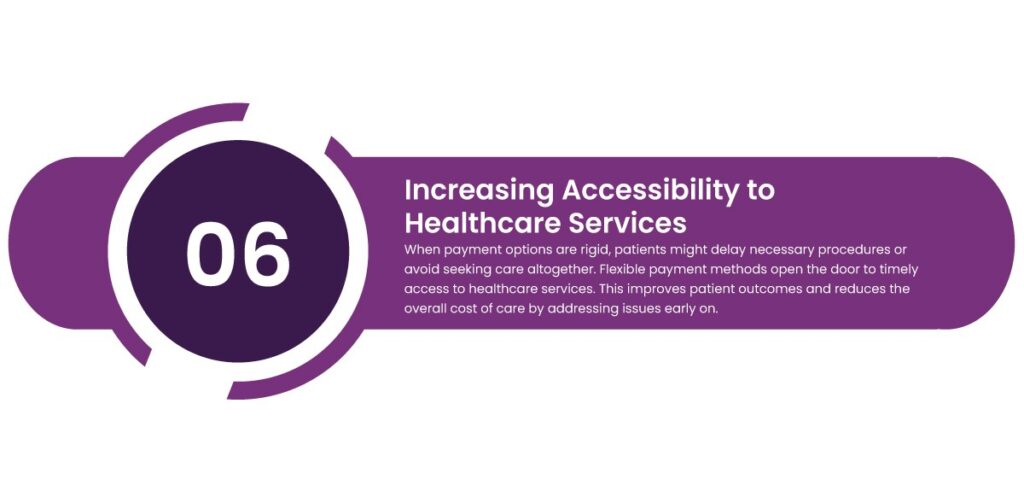
7. Promoting Loyalty Through Empathy
Patients who feel financially supported are more likely to remain loyal to their healthcare providers. Offering flexible payment methods communicates that the provider prioritizes patients’ well-being over profits. This approach fosters long-term relationships and encourages patients to return for future care.
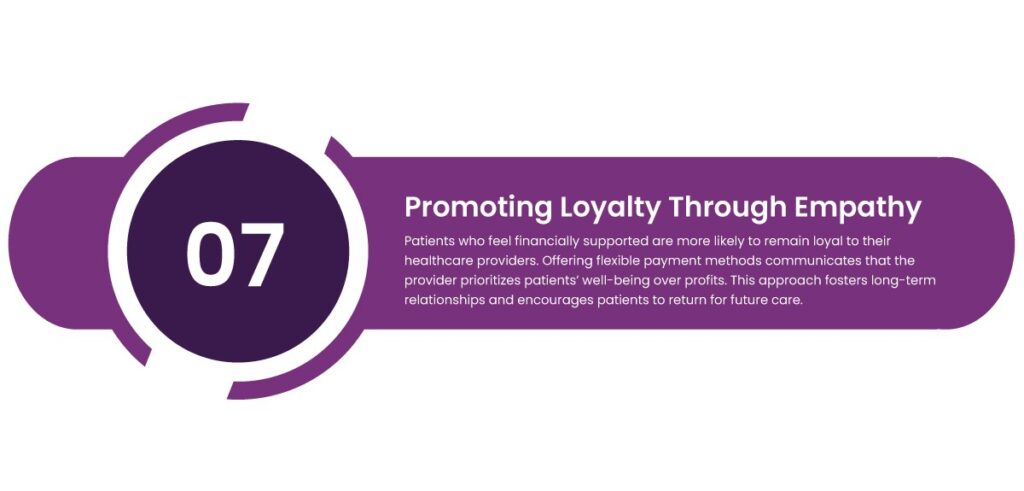
8. Preventing Medical Debt
Rigid payment structures often push patients into medical debt, which can have long-lasting consequences on their financial stability. By offering interest-free payment plans or hardship discounts, healthcare providers can proactively prevent patients from falling into debt.
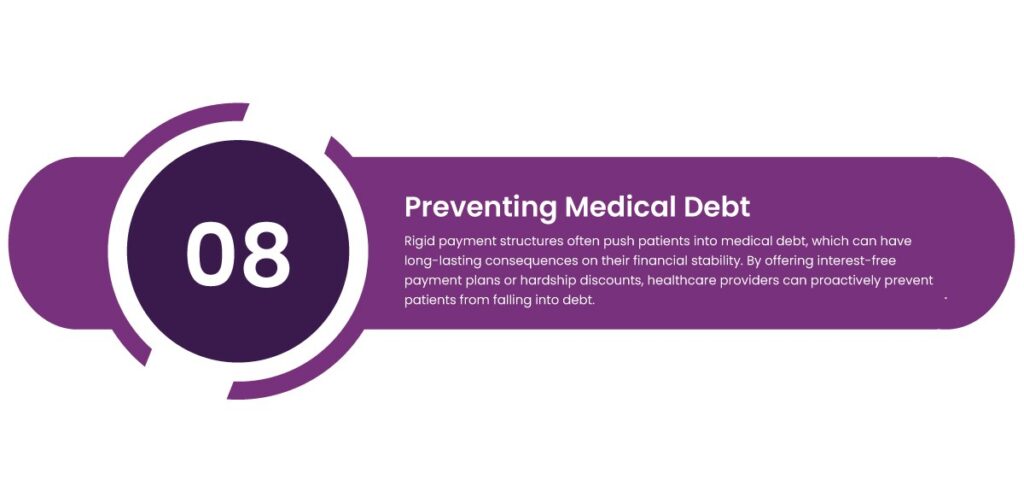
9. Strengthening Community Relationships
Flexible payment options also have a ripple effect on the community. By making healthcare more accessible and affordable, providers demonstrate social responsibility and establish themselves as compassionate community partners. This strengthens the bond between the organization and the communities they serve.
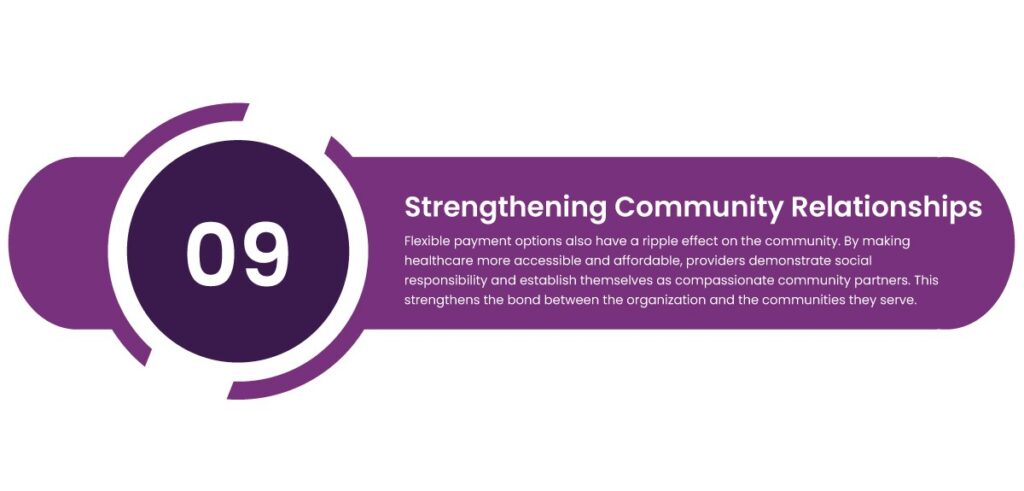
10. Enhancing Revenue Cycle Efficiency
From the provider’s perspective, flexible payment methods can reduce payment delays and improve cash flow. Patients are more likely to meet financial obligations when payment terms are manageable, leading to fewer overdue accounts and collection challenges.
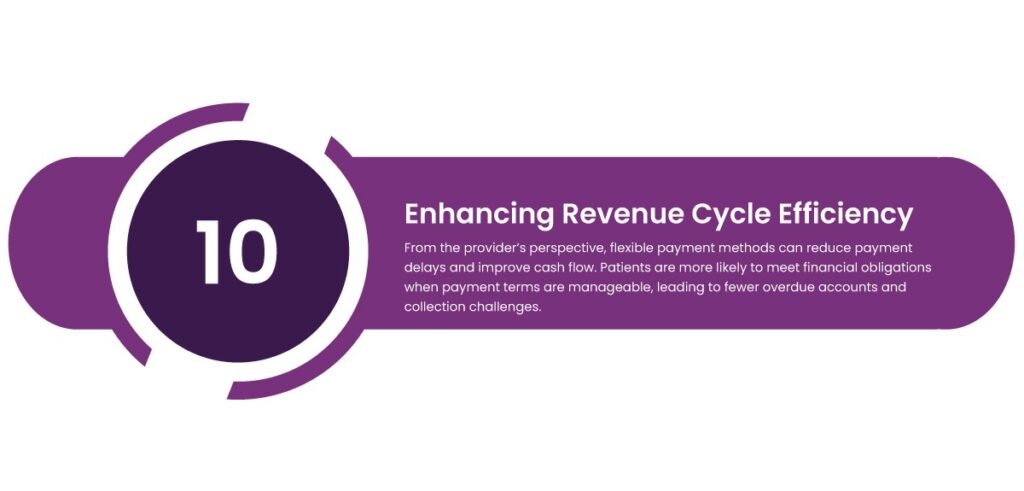
11. Encouraging Open Communication
When providers offer flexible payment methods, it fosters a culture of transparency and open communication. Patients feel more comfortable discussing financial concerns, knowing the provider is willing to collaborate on payment solutions.
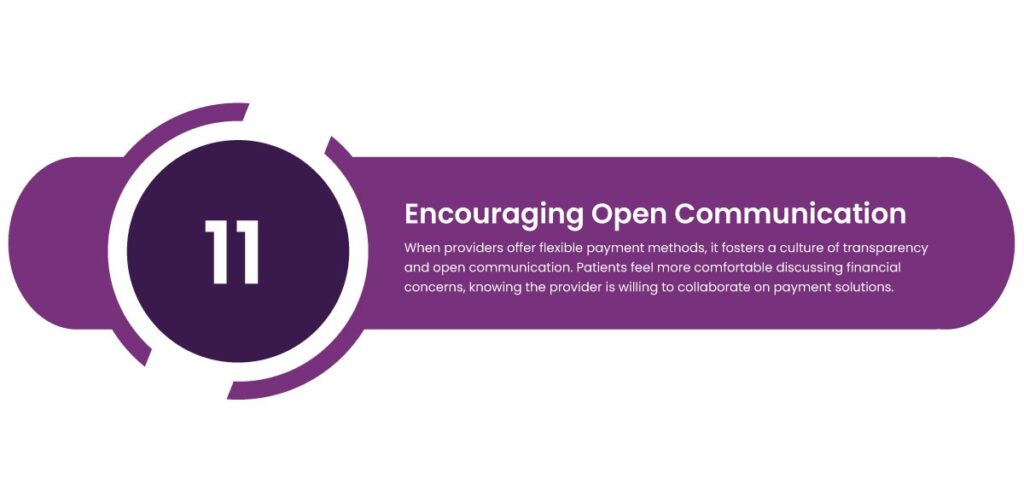
Patient-Centric Benefits of PayNova: Simplifying Healthcare Payments
The U.S. healthcare payment system is notoriously complex. Patients often grapple with confusing bills, insurance hassles, and out-of-pocket costs, making an already stressful healthcare journey even harder. Enter PayNova, a dedicated payment gateway designed to simplify and humanize the healthcare payment experience for patients.
Here’s how PayNova can transform healthcare payments into a smoother, more patient-friendly process:
1. Clarity in Billing
One of the biggest pain points for patients is understanding medical bills. Cryptic codes, unclear charges, and unexpected costs can leave anyone frustrated.
PayNova’s solution:
- Provides clear, itemized bills that break down services and charges.
- Allows patients to view their billing details through an easy-to-use portal.
- Reduces confusion by offering transparent payment summaries.
By eliminating billing confusion, PayNova empowers patients to make informed decisions about their healthcare expenses.
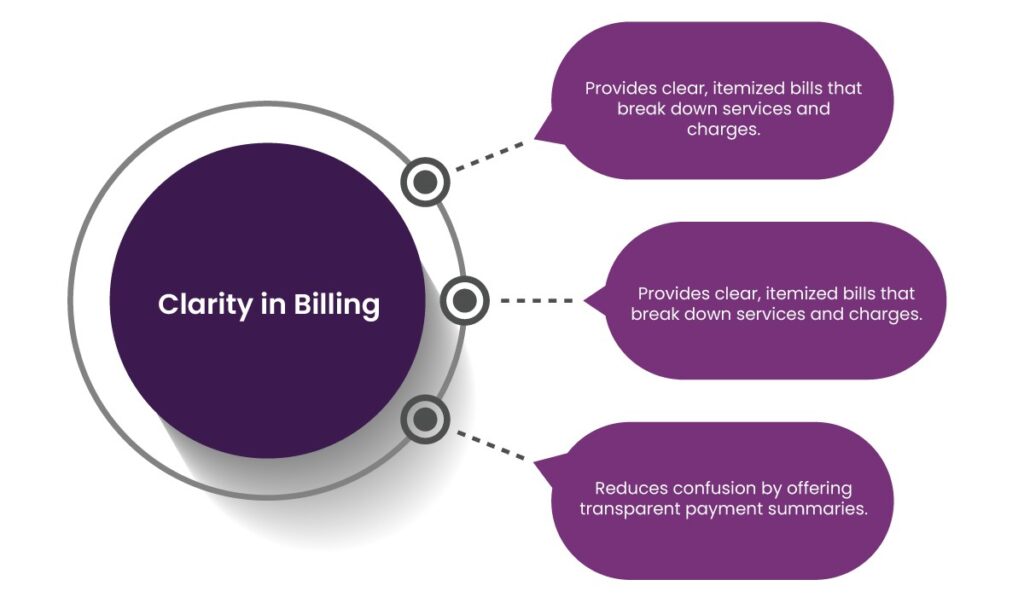
2. Flexible Payment Options
Paying for medical care shouldn’t be a source of anxiety, yet many patients struggle with limited payment options or rigid terms.
PayNova’s solution:
- Offers multiple payment methods, including credit/debit cards, bank transfers, and digital wallets.
- Enables payment plans and recurring payments for large bills, making it easier for patients to manage costs.
- Supports upfront, partial, or installment payments, tailored to individual needs.
This flexibility ensures patients can pay at their convenience, reducing financial stress and missed payments.
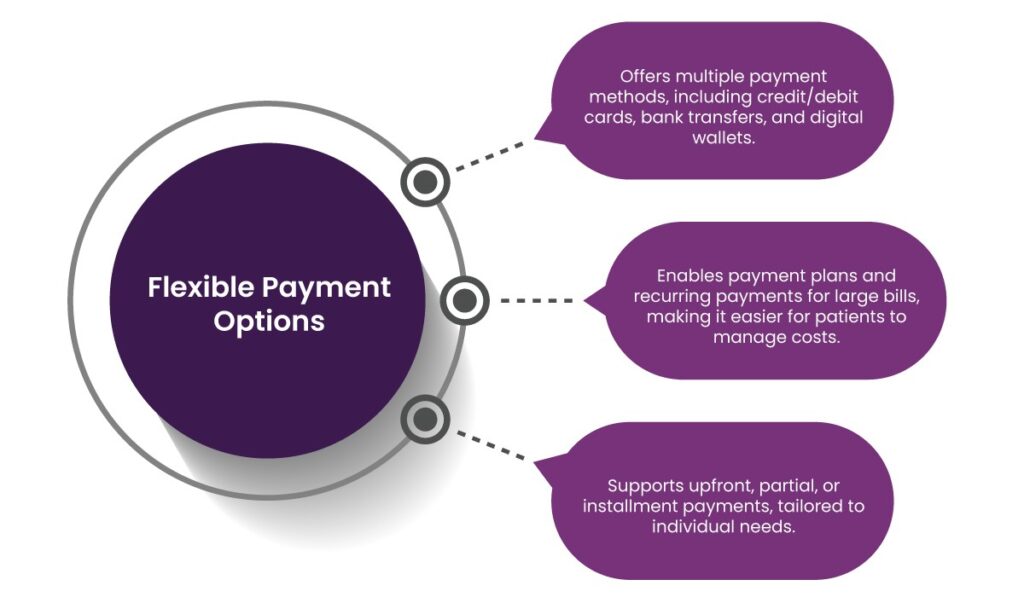
3. Enhanced Convenience with Patient Portals
Long gone are the days of mailed bills and phone calls to settle payments. Patients deserve a modern, tech-friendly approach.
PayNova’s solution:
- Provides a user-friendly patient portal to track billing history, make payments, and set reminders.
- Offers mobile compatibility, allowing patients to pay from anywhere.
- Enables auto-pay features to avoid missed deadlines.
These features save time and effort, making bill management a hassle-free experience.
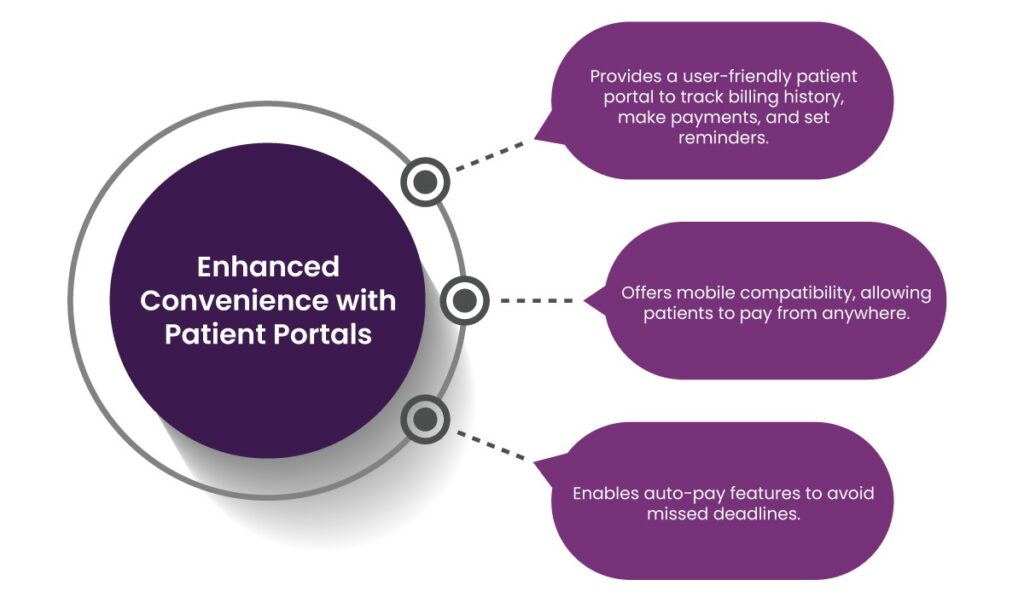
4. Faster Insurance Processes
Dealing with insurance claims is often a nightmare for patients, involving endless forms, delays, and denials.
PayNova’s solution:
- Verifies insurance coverage in real-time to reduce billing errors.
- Handles preauthorization automatically, ensuring patients know what’s covered before receiving care.
- Processes claims faster by integrating with healthcare systems, so patients aren’t left waiting for weeks.
With PayNova, patients enjoy quicker approvals and fewer disruptions in their care journey.
5. Security You Can Trust
Protecting sensitive financial and personal data is critical.
PayNova’s solution:
- Complies with HIPAA regulations to safeguard patient information.
- Implements PCI-DSS standards to ensure secure payment transactions.
- Uses encryption and fraud detection measures to keep data safe.
By prioritizing security, PayNova builds trust and peace of mind for patients.
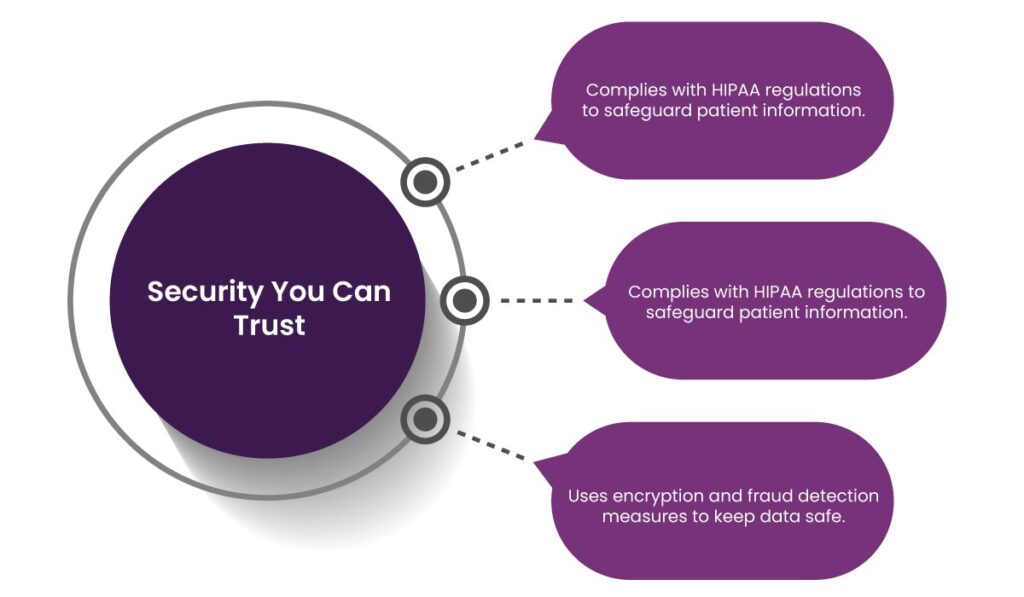
6. Streamlined Payments for Telehealth
With telehealth becoming more prevalent, payment systems must evolve to match virtual care’s convenience.
PayNova’s solution:
- Supports online payments for telehealth consultations and digital prescriptions.
- Integrates seamlessly with virtual health platforms, ensuring patients can pay as easily online as they would in person.
This digital-first approach aligns with modern healthcare trends and patient expectations.
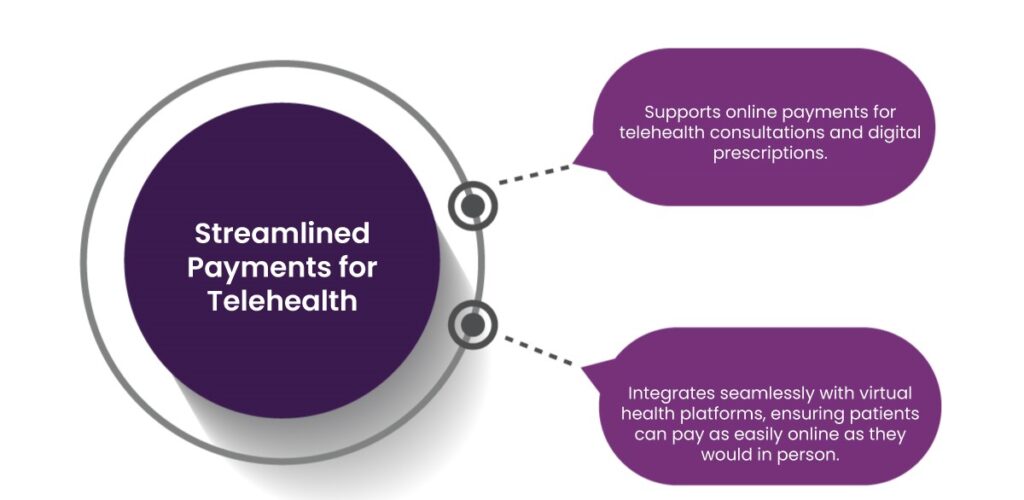
7. Supporting Long-Term Relationships
PayNova’s approach is not just about payments—it’s about building trust. By alleviating financial pressures, the platform enables healthcare providers to nurture long-term relationships with their patients.
7. Empowering Patients with Data and Insights
Patients deserve to stay informed about their healthcare expenses and payment progress.
PayNova’s solution:
- Provides real-time updates on payments, balances, and insurance claims.
- Delivers detailed financial reports to help patients plan and manage healthcare costs.
This transparency helps patients feel in control of their financial journey.
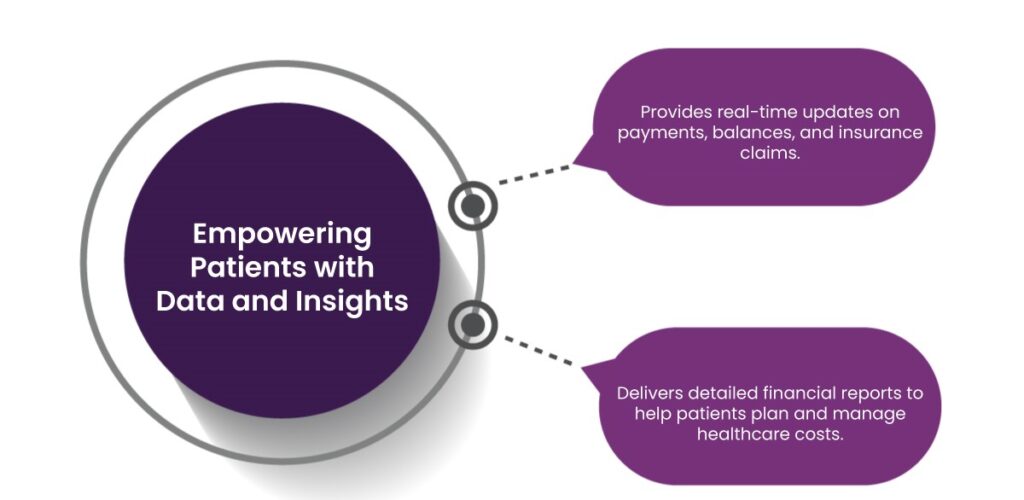
Why PayNova Matters
PayNova isn’t just a payment gateway—it’s a solution to many of the frustrations patients face in the U.S. healthcare system. By simplifying payments, offering flexibility, and enhancing transparency, PayNova transforms a traditionally stressful experience into one that is seamless and patient-friendly.
Whether you’re navigating high deductibles, managing insurance claims, or paying for telehealth services, PayNova ensures that your payment process is as smooth as possible—so you can focus on what really matters: your health.
Conclusion
Patient-friendly payment options are no longer a luxury—they are a necessity. In a world where healthcare costs continue to rise, patients need providers who understand their financial challenges and offer compassionate, practical solutions.
Flexible payment methods build trust, encourage preventive care, and improve overall patient satisfaction. Platforms like PayNova exemplify how technology can bridge the gap between patient needs and provider goals, creating a win-win situation for both parties.
Ultimately, patient-friendly payment options aren’t just about finances—they’re about care. By removing financial barriers, healthcare providers can focus on what truly matters: delivering quality care and improving lives.
Frequently asked question
- What exactly are patient-friendly payment options?
Patient-friendly payment options are flexible, clear, and easy-to-manage ways for patients to pay for healthcare. Think installment plans, upfront cost estimates, and payment methods tailored to individual budgets—designed to take the stress out of medical bills.
- Why should healthcare providers offer flexible payment plans?
Flexible payment options help patients breathe easier by reducing financial stress. They also increase patient satisfaction, encourage people to seek preventive care, and make healthcare more accessible to those who might otherwise delay or skip it.
- How can flexible payment plans improve my experience with healthcare providers?
Providers who offer flexible payment plans show they care about your financial well-being. Offering options like zero-interest plans or adjustable due dates helps patients feel respected and supported—leading to a better experience and higher satisfaction.
- What is PayNova, and how does it make healthcare payments easier?
PayNova is a game-changer for managing medical bills. It simplifies the payment process with clear, itemized billing, multiple payment options, and faster insurance claims. This makes the whole payment experience smoother and more transparent for patients.
- How does PayNova keep my payment information secure?
PayNova takes security seriously. It follows HIPAA guidelines, uses PCI-DSS standards, and employs encryption and fraud protection, ensuring your payment information stays safe every step of the way.
- Can I use PayNova for telehealth consultations?
Absolutely! PayNova makes paying for telehealth consultations just as easy as in-person visits. It integrates seamlessly with online health platforms, allowing you to pay for virtual care from anywhere, at any time.
- How does PayNova speed up insurance claims?
PayNova simplifies insurance by verifying coverage in real-time, processing claims quickly, and reducing the hassle of waiting. It also handles preauthorization automatically, so you’ll know exactly what’s covered before you receive care.
- Why do healthcare providers need to offer these patient-friendly payment options?
Offering flexible payment solutions helps reduce financial barriers to care, encourages patients to seek help early, and fosters trust. By making payments easier, healthcare providers can build stronger relationships with their patients and improve health outcomes overall












